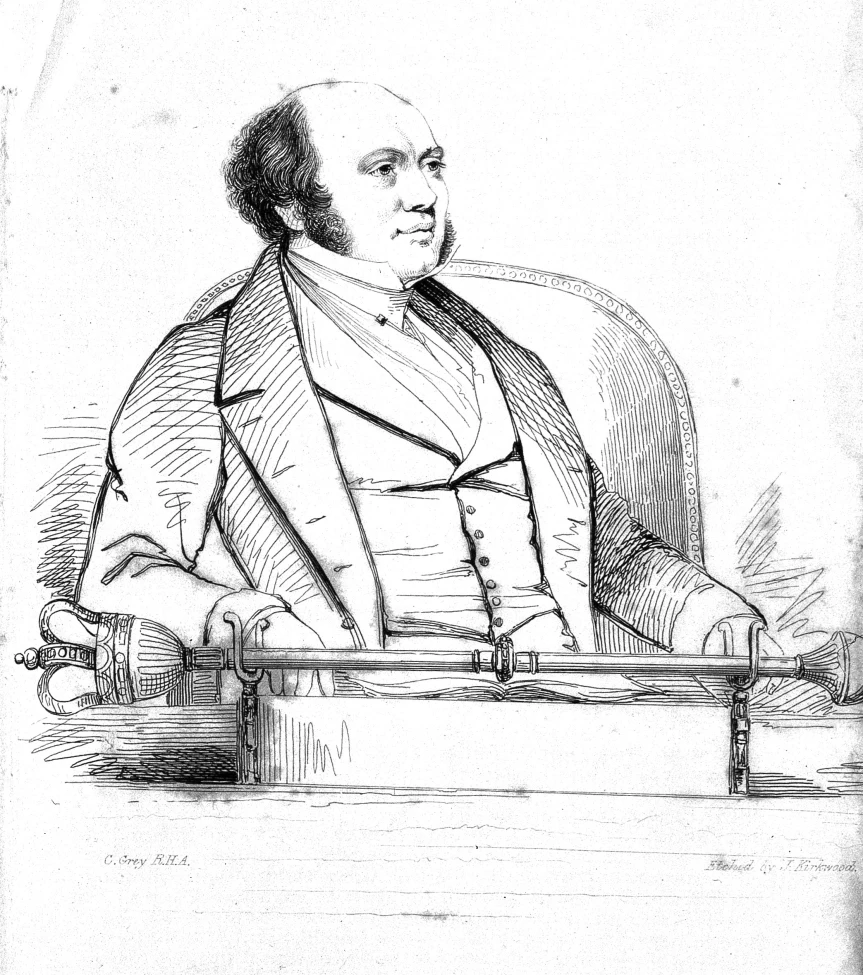Complex numbers have the form
where is the imaginary unit. Quaternions contain two more imaginary units,
and
:
Sir William Rowan Hamilton discovered the quaternions in 1843 as he walked along the Royal Canal in Dublin, and he famously carved the formulas on a stone of Brougham Bridge. He had for some time been trying to extend the “couplets” to “triplets”
, but he realized that the requirement
for the product of two such numbers could not hold. His key insight was to realize that a fourth imaginary unit,
, was required and that multiplication would be noncommutative:
in general.
 Sir William Rowan Hamilton. Etching after J. Kirkwood. Credit: Wellcome Library, London. Wellcome Images. Source.
Sir William Rowan Hamilton. Etching after J. Kirkwood. Credit: Wellcome Library, London. Wellcome Images. Source.
We do not know exactly how Hamilton discovered the quaternions, though his writings provide insights. One way in which he could have constructed the quaternions is by starting with the complex numbers and asking for each of their properties “How might this be different?” Four terms rather than two and noncommutative multiplication are the differences. This approach of identifying the key features of a problem and asking, for each one, “How might this be different?”, is a powerful process for creativity and discovery—a process that anyone can apply to any problem.
For more on the discovery of the quaternions and on how to generate ideas see the article Hamilton’s Discovery of the Quaternions and Creativity in Mathematics by Dennis Sherwood and I in the LMS Newsletter.
